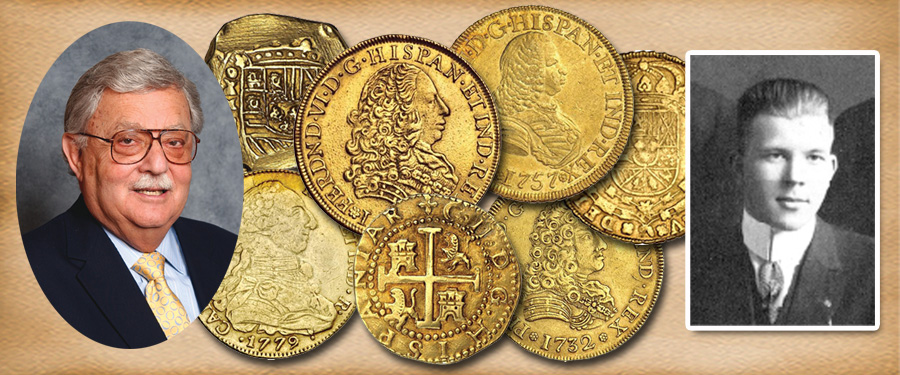
In my early years of working full time at Stack’s
in New York, I had the privilege of meeting and serving many of the great collectors
who lived near the city, as well as many who
came to visit or work in New York. The Big Apple was and still is a major
attraction for collectors who lived, worked or visited the metropolitan area
and Stack’s was a great place to meet with friends and collectors as they assembled their
numismatic collections.
Many of the auctions held by Stack’s and the other
auction houses in New York, attracted collectors from the City’s five boroughs,
and from surrounding areas such as Long Island, Westchester, New Jersey, Pennsylvania, and Connecticut. In
addition, people would travel long distances to New York for important sales.
The greater New York area was a hub of many of the collectors whose names today are
legendary. The city was a center of art and culture and was home to the
American Numismatic Society and its major numismatic museum, and a dozen or more
coin clubs
were centered in or about New York.
The Stack’s shop, as I related in earlier writings,
became a "club house" for numismatists and attracted those who
visited the city. For a young person just learning the ropes, it created an
incredible opportunity. My experience being acquainted with and learning from
these great numismatists was extensive and I was the beneficiary of information
from some of the greatest specialists in the United
States.
In the spring of 1951, a well-dressed, debonair
gentleman came into our shop. He wanted to know if we had any doubloons, from
Central and South America to show him. Stack’s always maintained a vast and diverse inventory and we took out a few
Spanish Colonial
gold coins to show him. He introduced himself as Josiah K. Lilly, the
chairman of his family’s pharmaceutical business, Eli Lilly and Company,
headquartered in Indianapolis. He explained he had a passion to learn more about the
coins that gained their fame during Spanish Colonial days. The coin that
was most talked about was the ‘”doubloon,” or 8 Escudos.
My father, Morton Stack, and my uncle, Joseph B.
Stack, were working at the counter that day and began showing J.K. Lilly
gold doubloons that we had in stock. These included the somewhat crude early
issues,
known as cobs due to their somewhat irregular shape. He also examined the
various portraits of Spanish kings that appeared on the later issues. Morton and
Joseph advised Mr. Lilly that these coins were made and struck in various South American
countries, identified by the mintmark on them, and also the assayer’s initials,
which gave assurance that the fineness of the gold and weight were verified and therefore
official. It was discussed how
these were used in trade and also
to pay the troops who occupied and ran the countries occupied by the Spanish.
However,
at least 20% of all the gold mined was sent back to Spain as compensation to
the King who helped finance the expeditions. That portion of the gold was called "The Royal Fifth," and these shipments
were a great temptation to pirates of the day. Many treasure ships were captured, looted and sunk during this period
of Spanish domination of the Western Hemisphere.
These
were the coins that Josiah K. Lilly desired. They proved to him that gold coins
were actually minted and then plundered by the pirates — here was the evidence.
From
Stack’s stock at the time, we gathered for him 12 different pieces, some from different mints of Central and South America, a cob or two, and for the balance, pieces with the
portraits of the various kings of Spain. J.K. Lilly was amazed with what we
were able to show him, and he decided
to purchase all 12 to start his collection. My father and uncle introduced me
to him. I was the only junior Stack in Stack’s at the time, as my cousin
Benjamin had left to try his
luck in Las Vegas, and Norman, his brother, was in military service. Later on,
since J.K. Lilly liked personal deliveries
to Indianapolis, I became the appointed messenger to him, whenever either senior Stack could not make
the trip.
In
my next article I will discuss more about Mr. Lilly’s first visit to Stack’s in
New York City. The future would bear out what an important visit it was.





